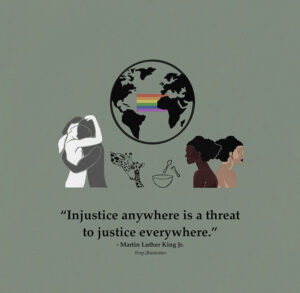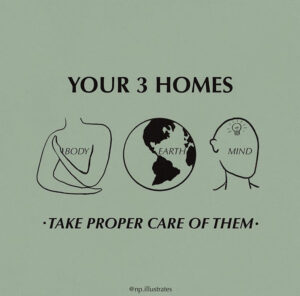
We are all familiar with sustainability and how it focuses on meeting our needs in the present, without depleting the available resources for future generations. Profit, people, and the planet are all central themes of this concept.
However, with the state of the world and the various environmental issues arising, intersectional environmentalism may be the solution we all need.
According to sloactive.com, governments have been more focused on COVID-19 than conservation. As a result, there has been an increase in land grabbing, deforestation, illegal mining, and wildlife crimes.
Also, there have been extensive reports of police brutality, and a constant reminder that all lives don’t matter.
Initially, law professor, civil rights advocate, and social theorist, Kimberlé Crenshaw, discovered ‘Intersectionality’. In an interview with The National Association of Independent Schools (NAIS), Crenshaw defined what it is exactly.
“Intersectionality is just a metaphor for understanding the ways that multiple forms of inequality or disadvantage sometimes compound themselves, and they create obstacles that often are not understood within conventional ways of thinking about antiracism, or feminism, or whatever social justice advocacy structures we have,” Crenshaw said.
Environmentalist and social justice advocate Leah Thomas coined the term “intersectional environmentalism.” Intersectional environmentalism is a lifestyle that not only protects the planet but includes inclusivity.
In an Instagram live Q&A w/ Thomas, she offered her perspective on how climate change coincides with the Black Lives Matter movement.
“I think the argument that we are trying to make with intersectional environmentalism and the people who are passionate about environmental justice is, through intersectionality all things are connected,” Thomas said. “So, that means that climate justice is social justice is environmentalism. And those things are one of the same. People are a part of this great big ecosystem.”
Many people are considering this approach to fixing environmental issues, as opposed to just focusing on sustainability.

A’nire Glenn, a FAMU alum and FSU grad student, uses her social media platform to bring awareness about holistic living and saving the planet.
“Every day I am mindful about keeping the balance between the present and future,” Glenn said. “I am intentional about how I go about each day. Therefore, I have reconsidered my place in the world and how I contribute to it. And when I say the world, I mean society and the literal planet. I remain open to new information ranging from agriculture, gender politics, race, metaphysics, and more. As an artist, I have accepted the challenge of consciously being well informed in order to prepare myself to be a global creative and overall, a well-informed person by my standard.”
Educating the next generation on these issues can also create a better tomorrow.
Stephanie Dauphin, a FAMU alum and an educator in Gadsden County, makes it her duty to keep her high school students aware of the issues that are going on in the world.
“I mostly focus on social studies, but I do implement social injustice discussions. Last year I spoke to my students about Trayvon Martin, The Central Park Five, and Sandra Bland. And that wasn’t even a part of our lesson. But it’s just to show you how the social justice system is corrupt,” Dauphin said.
As a collective, we can also start reducing our carbon footprint and recycling.
Alexandra Kuchta, Deputy Press Secretary at Florida Department of Environmental Protection, offered insight on the many ways the community can get involved and help preserve Florida’s natural resources.
“Education is the key to solving this issue. Residents tend to mix non-recyclables with the recyclables thereby contaminating the loads. When these loads are contaminated, it cannot be recycled and therefore can only go to the landfill,” Kuchta said.
According to the DEP, many county landfills are currently experiencing issues with their recycling program due to the high level of contamination.
“One of the most common misconceptions is that plastic bags are recyclable in the curbside containers and it is creating a problem for many recycling facilities. Just to be clear, recyclables include glass, paper, plastics, textiles, rubber materials, and mulch. Curbside materials consist mainly of plastics, glass, paper, cardboard, and rubber materials. The good news is that you can now recycle your plastic bags at many of your local grocery stores. DEP is participating in the WRAP Campaign for retail takeback of plastic bags and film. You can enter your zip code to find a retailer near you: Plastic Film Recycling,” Kutcha said.
With all hands on deck, we can not only heal the planet but build sustainable and inclusive communities. That will protect the environment in the long run, as well as the welfare of all people.
Learn more at www.intersectionalenvironmentalist.com or follow Leah Thomas @GreenGirlLeah on Instagram.